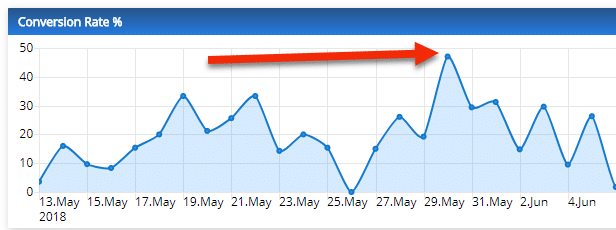This post is by Dave McDaniel, a senior VP with ManageByStats.
With over 2 million Amazon sellers worldwide, there’s no shortage of information on how to succeed selling on the world’s number one online platform. Mentors, groups, courses and experts abound.
Despite that abundance, new information is constantly needed. Amazon is ever-changing, and we Amazon sellers are always hungry for the latest how-tos and best-practices. There’s always something new to learn.
In this article we cover the four absolutely key KPIs for monitoring the health of your sales on Amazon, so you can see at a glance how your business is doing.
Running a successful business requires a varied approach. Details are key, and you need to understand data transparency, trend analysis and a myriad of data points to make decisions and plan your expansion.
Focus is central to management. That means knowing the health of your business at a glance, being able to spot trouble areas and quickly establish entry-points for solutions. The focused, 10,000-foot view is important to any successful operation.
A great way to establish that focus is by using KPIs.
What are KPIs?
Many of you will know that KPI stands for key performance indicator, but you may not realize that KPIs are not set in stone. They’re subjective and depend a lot on the information you deem necessary to run your business.
At ManageByStats we’re experts on Amazon, and we provide services for thousands of customers who are Amazon sellers. We’ve worked with these sellers daily for over five years.
From that experience we’ve distilled some of the best KPIs by which to manage an Amazon business and, most importantly, gauge and predict growth.
The 4 critical KPIs for Amazon sellers
The best at-a-glance picture of the health of your Amazon business lives in these four metrics:
- Sessions
- Conversion %
- Profit
- Average rating
With just these four measurements you can quickly see how you’re doing, and where you should put your focus. They represent the key components of the lifeline of your business:
- How much traffic are you driving?
- How well is your listing turning that traffic into sales?
- How well are you doing with the results of those sales?
- How are your customers rating your product – an indication of future sales?
We’ll cover each.
Sessions
Sessions shows the number of visits to your Amazon listing by potential buyers. All activity by a single buyer within a 24-hour period is considered one session.
Why is sessions key for Amazon sellers?
Sessions is the pulse of your business. It tells you how much attention you’re attracting. For example, imagine you had a sessions graph you were monitoring daily and saw a trend and a dip like this:

As a manager you could see that, at the red arrow, it’s more or less on-trend, but there’s a big spike before and a dip straight after. It’s a good idea to take a look at not only the down-trending areas but the up-trending ones as well, so the spike merits investigation as well as the dip.
Spotting a rising trend and taking action can give you insight on how to strengthen that rise.
Conversion %
The conversion percentage shows what Amazon refers to as the Unit Session Percentage. That’s how you’ll see it in your Amazon Seller Central.
It’s essentially how many units were sold, divided by the number of shopper sessions on your product listing. If your conversion rate is 20%, for example, then you sold 20 units for every 100 shoppers viewing your listing.
Why is conversion % key for Amazon sellers?
Once you’ve got blood flow to your listing (sessions), the next big thing is how well it’s performing.
Are you directing a lot of traffic, but that traffic is barely converting? Conversions tell you how well your listing is performing and can give you an immediate point of focus if you see that trend dropping.
In the following example this would’ve been a good point to jump in and investigate the upward trend, and possibly not only increase the rise, but stave off the drop that came next:

Profit
Amazon doesn’t show your profit, but programs like ours let you enter costs and other factors in order to calculate profit on your sales.
Why is profit key for Amazon sellers?
Profit may seem obvious, and probably it is, but sometimes sales get valued more than profit. Sales, however, don’t give you the whole picture. Profit gives you a much better gauge of business health, and is a better KPI. High sales coupled with high costs lead to low profitability, and do not make a successful business.
Watch your profit to see how your business is really doing.
Average rating
The average rating, as calculated by Amazon, is a crucial KPI for sellers who “own” their listings, including private label sellers and brands.
Note that the average rating is not a true mathematical average, as Amazon takes into account the age of reviews, helpfulness votes and whether the reviews are from verified purchases.
Why is average rating key for Amazon sellers?
Seeing what kind of customer response you’re getting is a good barometer of future sales. Reviews influence new customer purchases. Trends in your reviews can give you an indication of product quality, and highlight things that might need fixing.
KPIs give you the big picture
Oversight is key for any business. Being able to see what’s going on, at a glance, helps you spot developing situations, solve potential issues before they happen, and envision ways to expand.
Know the health of your business with KPIs and use that knowledge to manage your Amazon business to greater and greater success.
ManageByStats is a suite of online software tools for Amazon sellers that includes tools for managing sales, customers, advertising (PPC) and inventory, automated email notifications, email campaigns and reviews, feedback and keywords.

Leave a Reply